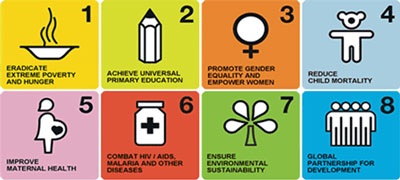27 May 2013 - {{hitsCtrl.values.hits}}
 With 2 years to go for the 2015 Millennium Development Goal (MDG) deadline, Sri Lanka appears to have made notable progress in many fronts, particularly in areas of achieving universal primary education enrollment and water supply & basic sanitation (WSS), Asian Development Bank (ADB) showed.
With 2 years to go for the 2015 Millennium Development Goal (MDG) deadline, Sri Lanka appears to have made notable progress in many fronts, particularly in areas of achieving universal primary education enrollment and water supply & basic sanitation (WSS), Asian Development Bank (ADB) showed.
27 Dec 2024 9 hours ago
27 Dec 2024 27 Dec 2024
27 Dec 2024 27 Dec 2024
27 Dec 2024 27 Dec 2024
27 Dec 2024 27 Dec 2024